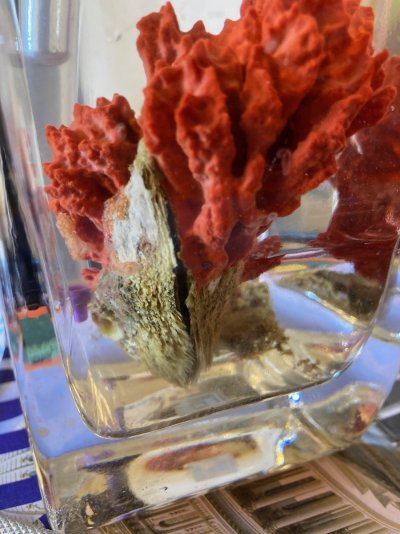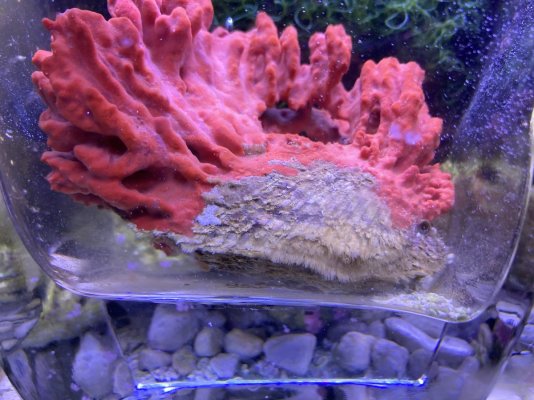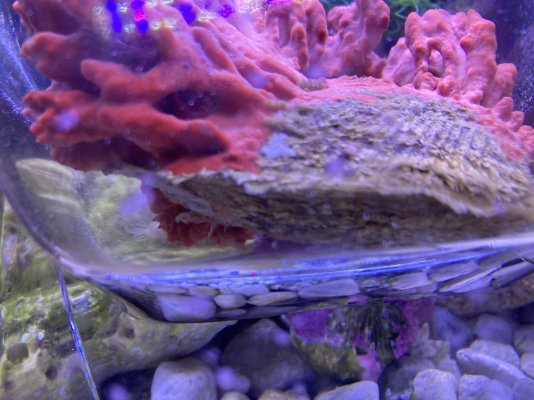Hello
I bought a red sponge in my LFS, and because I found small crabs I posted this: Is this crab safe? What is it? in the Hitchhiker & Critter ID section.
Well, while trying to figure out how to dip a sponge without having contact with the air and trying to catch the crabs I saw the entire base of the sponge moving
...it is a big sea clam, and it's alive!! OMG
What do I do know, should I place the clam with the mouth facing the water flow? if it dies will be a big dead animal in my tank....
will the coral dip kill the clamb?, at this point I'm about to place it in the sump and forget about this sponge
help...

I bought a red sponge in my LFS, and because I found small crabs I posted this: Is this crab safe? What is it? in the Hitchhiker & Critter ID section.
Well, while trying to figure out how to dip a sponge without having contact with the air and trying to catch the crabs I saw the entire base of the sponge moving
...it is a big sea clam, and it's alive!! OMG
What do I do know, should I place the clam with the mouth facing the water flow? if it dies will be a big dead animal in my tank....
will the coral dip kill the clamb?, at this point I'm about to place it in the sump and forget about this sponge
help...

Last edited:






















